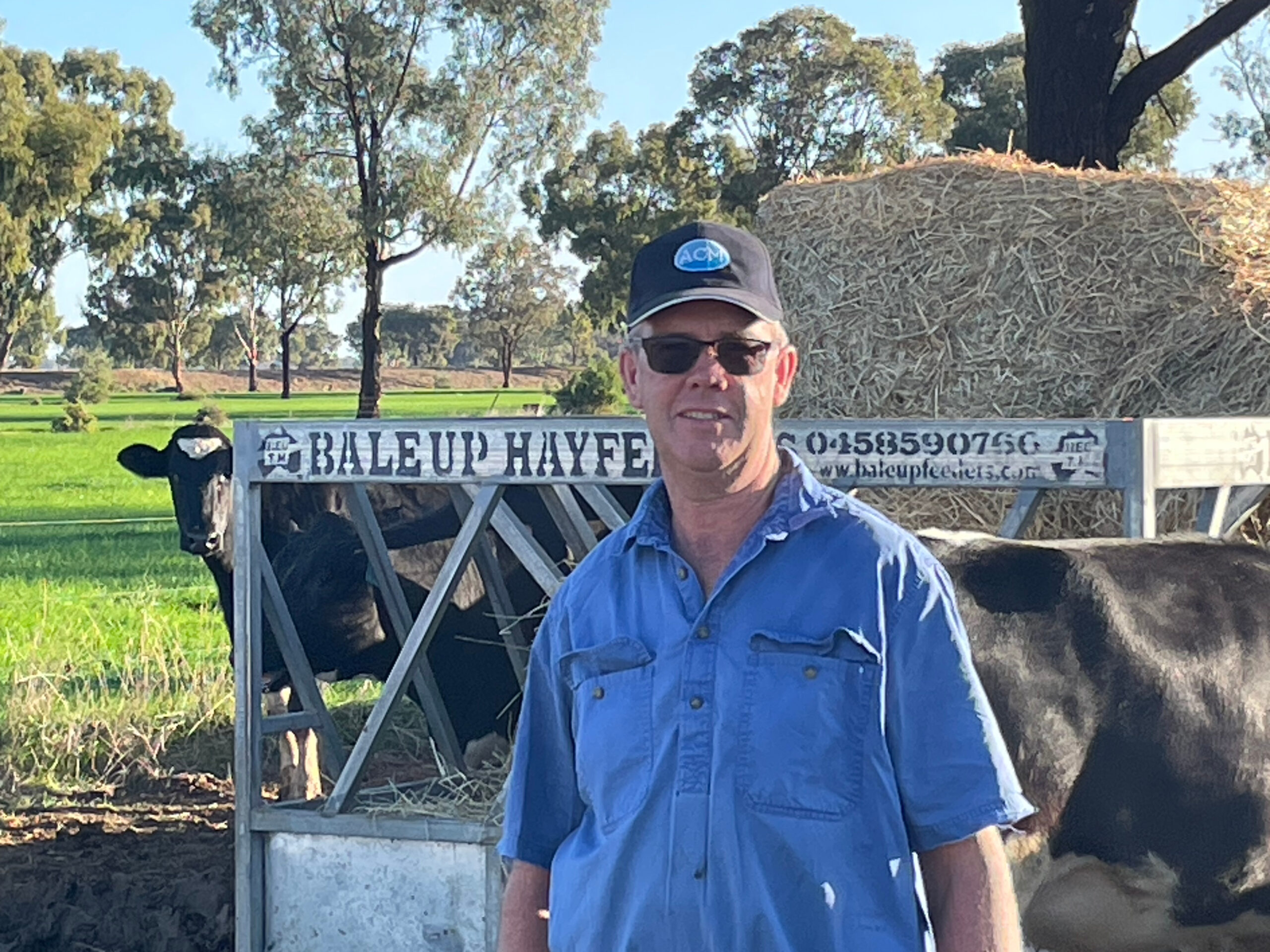Fertility focus underpins genetic boost
James family
Region: NSW Riverina
Topic: Boosting a herd’s average BPI
Bernard James hasn’t bought cows for five years. He hasn’t needed to. The dairy farmer from Womboota in the NSW Riverina has had more than enough quality replacements for his 430-head Holstein herd.
He’s even bred some dairy-beef crosses to diversify the farm’s income. But this wasn’t always the case.
“Our change all started with addressing our fertility nine years ago and our genetic improvement has flowed from that,” Bernard said.

Bernard James said having better fertility gave us more heifers to work.
“Having better fertility gave us more heifers to work with and we could use the BPI (Balanced Performance Index) as a tool to cull with and decide which cows and heifers to breed to sexed semen.”
Since Bernard and Jenny James started their crusade to improve herd fertility, their herd’s Fertility Australian Breeding Value (ABV) has increased from 103 to 109.
This rise, across the nine years until 2023, was identified by DataGene as “quite significant and rare” in its 2024 herd performance review.
This increase also means their herd has tracked above the national average for fertility since 2018, with this fertility improvement also underpinning a huge boost in their overall genetic progress.
In April 2024, the James’ herd was 217 BPI and ranked 32 for Holstein herds in the country.
This BPI increase was a rise of 372% from four years earlier.
The James’ Holstein herd also has a Health Weighted Index (HW) of 239 and is 28th in the nation on this index.
Taking an initial “tough” approach to fertility, Bernard began by creating a “joining list” of any cows that were less than 300 days in milk, more than 50 days in milk and less than 10-years of age.
From there he removed any cow that had repeated cell count issues, or problems with other health traits and only bred the remainder of the cows on this list.
“We stuck strictly to that, with no exceptions,” Bernard said.
“By doing that, the first few years, the flow-on effect from taking out low fertility cows, improved things out of sight.”
A huge change from their previous approach of breeding “every animal with four legs” to get enough replacements and buying a few heifers each year, the James’ now blanket inseminate every three months and average 53% conception for this one day joining.
Genomic testing has been a tool that has also helped the James’ in their fertility campaign.
As a Ginfo herd Bernard and Jenny began genomic testing earlier than many other farmers but didn’t do much with the data for years. Ginfo is a large-scale genotyping program run by DataGene to act as a reference for genomic predictions.
Now, with an increase in their herd’s fertility, this genomic information – specifically their BPI – is used to determine which cows are joined to sexed semen.
“We work out how many heifers we want (as replacements), double that amount and used sexed semen to breed these from our heifers and best BPI cows,” Bernard said.
“The rest goes to Angus. Not getting Freisan bull calves is a big plus.”
National Herd Development (NHD) helps Bernard and Jenny select a team of three-to-four Good Bulls each year, and this has also contributed to their genetic improvement.
Bulls that carry the Good Bulls logo meet DataGene’s minimum criteria for Balanced Performance Index, reliability and are available for purchase.
Herd production has steadily improved, with the 630-kilogram average herd producing about 685 kg of milk solids/cow each lactation.
The herds’ somatic cell count sits at 90,000-100,000 cells/ mL and Bernard wants to continue to concentrate on preventing mastitis.
He conscious that the herd spends a period of the year on a feed pad and if it is wet, there’s always an increased risk of illness.
Bernard said genetic gains were valuable to his business and he was looking forward to future improvements.
“I’m excited to think about what’s going to happen in the coming years after this big jump in the last few years, it is really only just starting,” he said.
“We have a beautiful line of cows that are well-natured, and we don’t have the cull heifers that we used to. Milk production is slowly climbing, and we expect that to keep climbing.”


